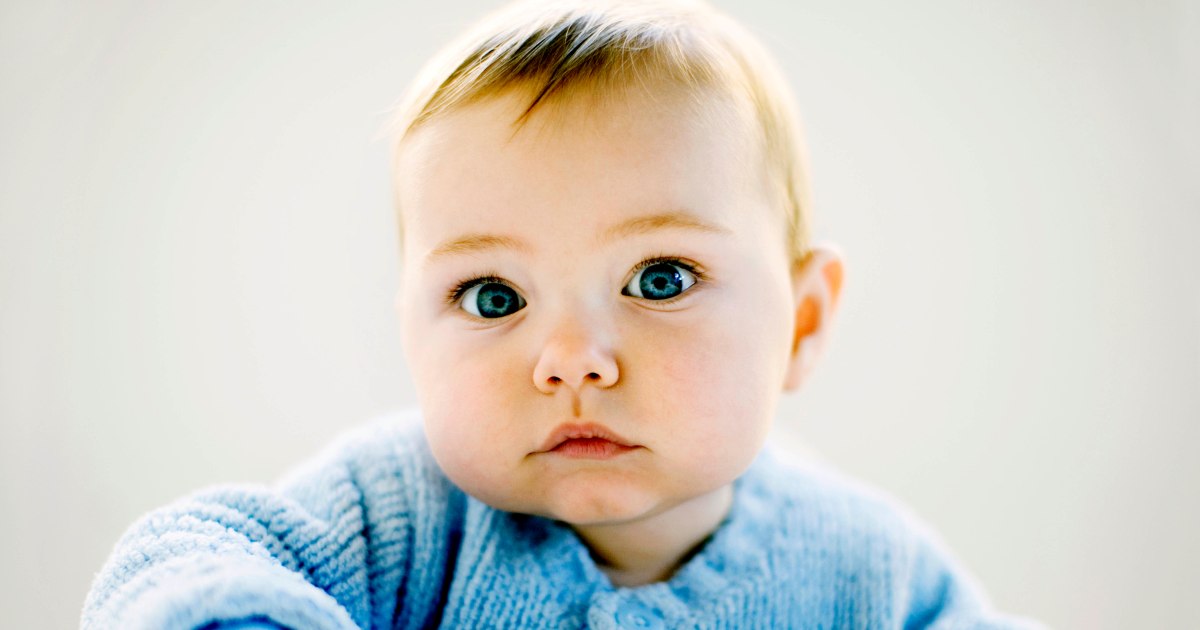You may think of Denmark as the delightful land of LEGOs, licorice and “The Little Mermaid,” but it is also a country with strict baby naming laws.
Every child born in Denmark must be given a name by the time they’re 6 months old. But it can’t be just any name.
Denmark, like Iceland, has a list of approved baby names for new parents to select from — and the list is long. According to the Danish Agency of Family Law, there are roughly 23,000 male baby names, 28,000 female baby names and 1,500 unisex names.
The goal of these naming laws is to protect children from some of the more … ahem … unique names that their parents might want to bestow upon them, and also to preserve the country’s cultural heritage.
Why Did Denmark Create a Law on Names?
Michael Lerche Nielsen, a professor at the University of Copenhagen’s Institute for Nordic Studies and Linguistics, explains to TODAY.com the origins of the law.
Centuries ago, the overwhelmingly Protestant population of Denmark would register baby names through their local vicar. The country’s first naming law, implemented in 1904, mostly concerned last names.
“During the last decades of the 19th century, there was an increasing amount of divorces, and some some women wished to get their own surname back. Then they had to write to the king directly to get this approval,” Nielsen explains.
In addition, he continues, 85% of the Danish population had a “patronymic” last name, “which ends in ‘-sin’ in Danish or ‘-son’ in English. Jensen, Hensen, Nielsen, like my own surname.” Essentially, “Nielsen” literally meant “son of Niel.”
Many people with similar surnames moved to industrial centers, causing confusion when multiple Peter Nielsens worked at the same job site. The country began to move away from patronymic last names and began adopting family names that remained stable through generations.
Naming laws were also developed to preserve “protected” or “posh” last names, as Nielsen called them.
If there are less than 2,000 inhabitants of Denmark with the same last name, it is considered “protected.” If you want your child to have that name and it is not part of your family heritage, you must obtain written permission from all Danish people over the age of 12 who bear that name.
There are approximately 200 protected last names in Denmark.
How Do You Select Your Baby’s First Name in Denmark?
The Law on Personal Names evolved through the years to include first names, with the most recent update in 2006.
If you have a baby girl, you can give her a name from the list of female or unisex names, but you cannot give her a male name. If you have a baby boy, you can chose from the male or unisex names, but not the female names.
If the name you want for your child is not on an approved list, you can submit an application explaining why you want to use that name. From 2002 to 2004, Nielsen served on the committee that accepts or rejects proposed names.
Lists of names have grown exponentially in popularity in the last few decades. Storm, for example, was a name that fell into the gray area between last name and first name. Nielsen says that it took 20 years for the name to receive approval, and now it’s in the top 50 most popular boys’ names.
According to data provided to TODAY.com from the Agency of Family Law, roughly 4,500 baby name requests processed in 2024. Of that list, 74% were approved, 12% were rejected and 14% were dismissed due to inactivity.
Interestingly, Nielsen doesn’t think naming laws will be around for much longer in Denmark.
“I’m convinced that when the next law will be discussed, they will simply drop any question of first names and just leave it to the parents,” he says. “I’m convinced about that.”
13 Banned Baby Names in Denmark
Danish people may allow their babies to nap outside but they certainly aren’t sleeping on their naming regulations.
Nielsen told the New York Times in 2004 that the following names had been rejected:
Jakobp Bebop AshleiyAnusPlutoMonkey
Nielsen shared a few additional names with TODAY.com and included the reasons they were rejected.
Fager and Ankjær (male): Rejected because it was identical to a protected last name in Denmark.Ridderbald (male): Rejected because it was “not suitable as a first name.” It was too linguistically similar to several last names.Gore (female): Rejected because it was identical to a protected surname in Denmark and it is used as a boy’s name abroad.Rune (female): Rejected because it was an approved boy’s name in Denmark.Xeest (male): Rejected because it was more like a last name than a first name, and it is similar to a protected last name. Potte (male): Rejected as an “unsuitable” name because it is similar to the Danish word for the vessel into which infants are delivered. “Potte” in Danish is also slang for a small car.The Top 10 Baby Names in Demark for 2023
If you want to find an already-approved Danish name for your baby, there are plenty to choose from. According to Statistics Denmark, here are the most popular baby names in Denmark from 2023, the most recent year published.
GirlsFridaLunaEllaAlmaEmma SofiaOliviaAgnesIdaKarlaBoysCarlWilliamOscarAlfredNoahAskelEmilOliverMaltheValdemar
